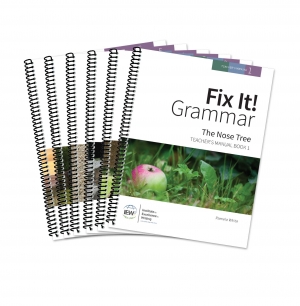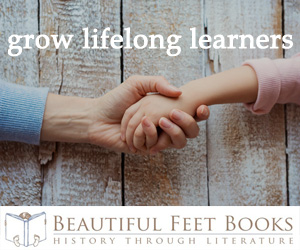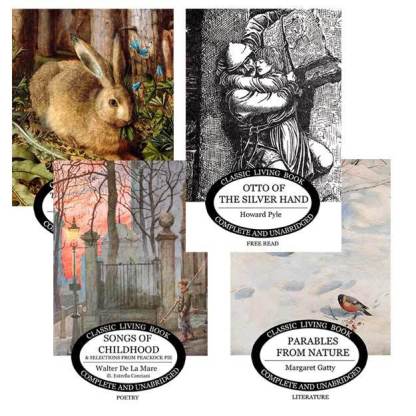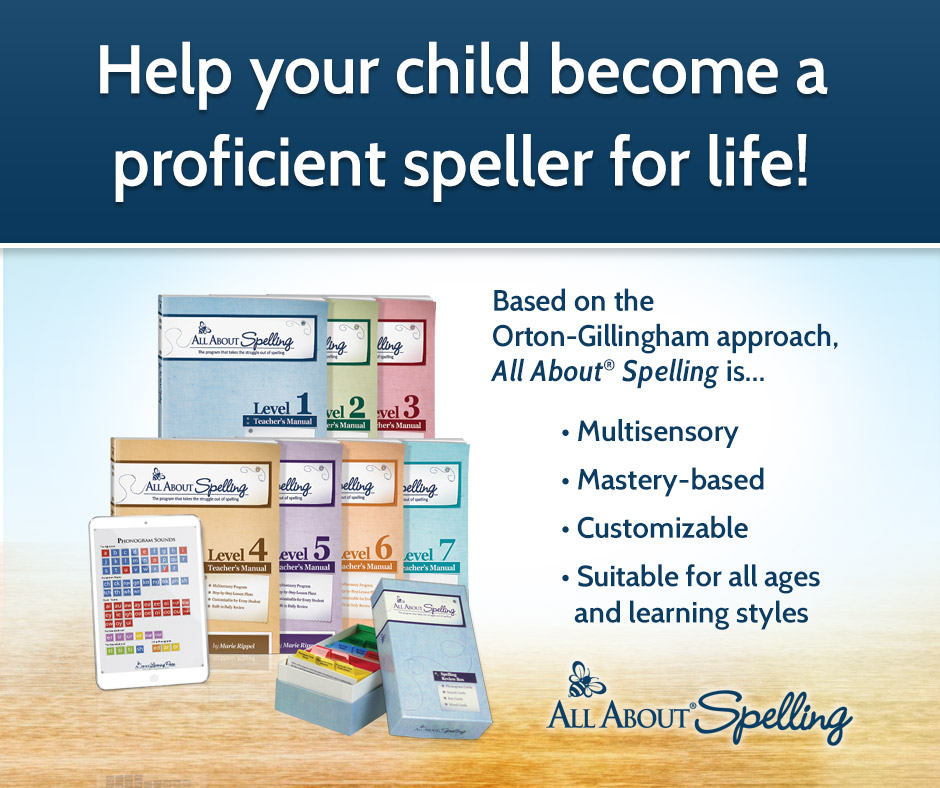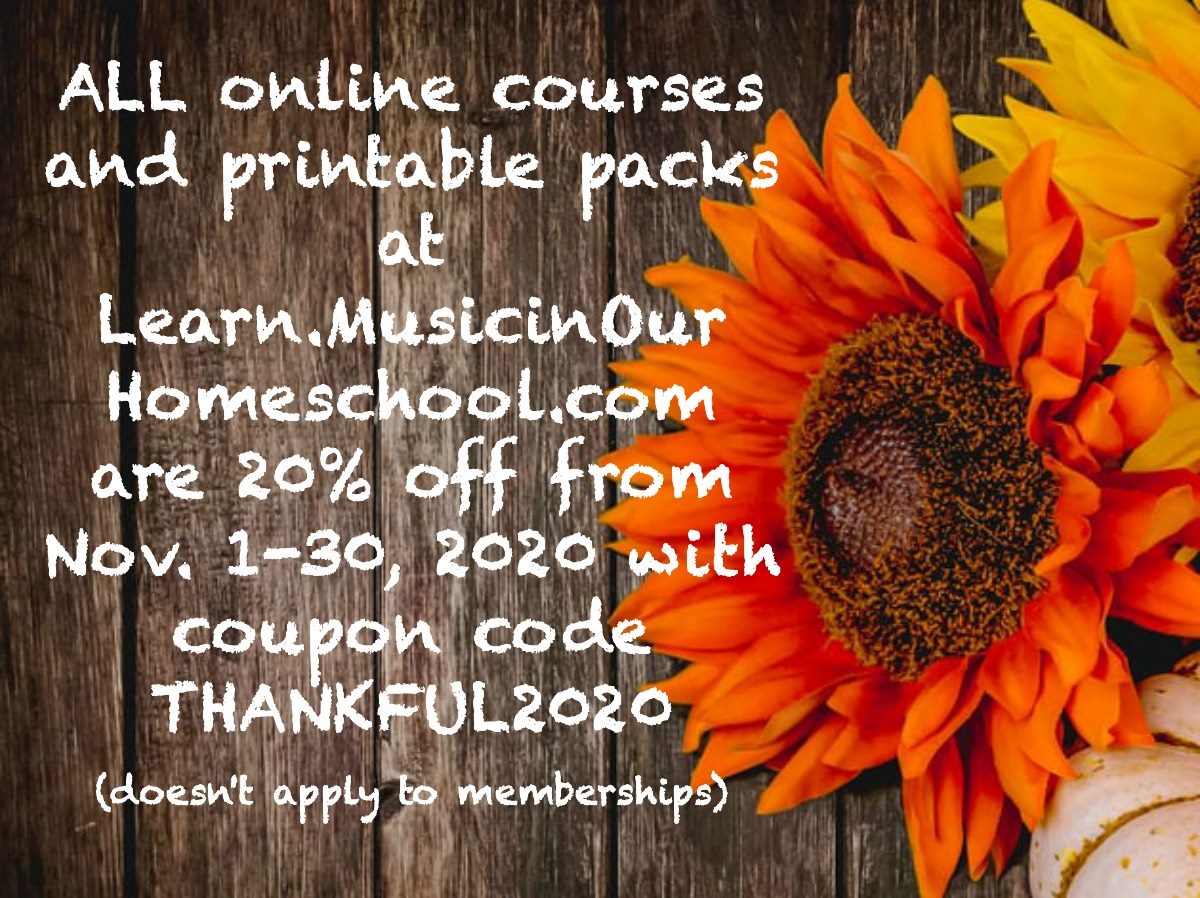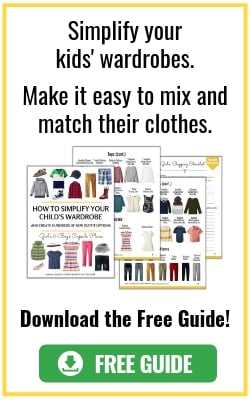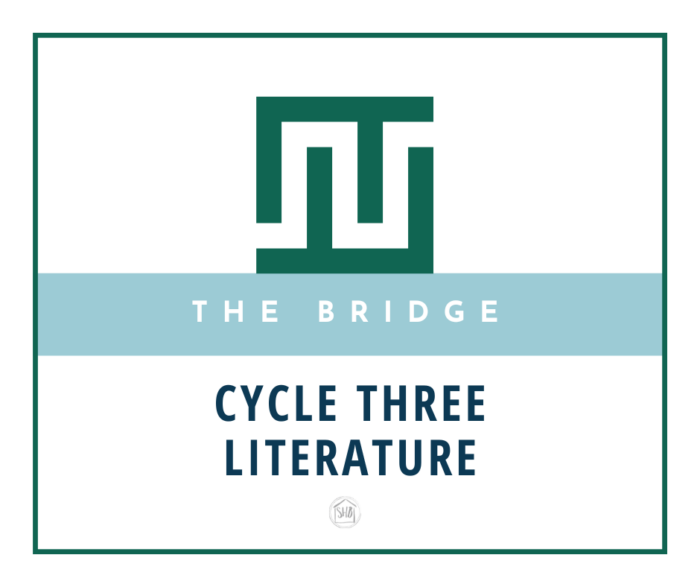
Yesterday, a shock was administered to my system. My eldest daughter, who previously when asked, “What’s your favorite subject in school?”, would enthusiastically say, “Math!” replied with a different answer. A different answer!
Q: “I thought math was your favorite subject?”
A: “Nope.”
Q: “Well, then, what is your favorite subject now?”
A: “History and literature.” – See those quotes? She actually said “literature.”
😲😲😲
This post may include affiliate links. If you click and make a purchase based on my recommendation, I get a small remuneration at no extra expense to you. I only recommend things I use and believe to be a blessing.
I’m just gonna be real with you, dear reader, immediately and completely, I took ALL the credit. Immediately I knew the change had happened slowly over the past two years of the Bridge. It just had to have happened.
A moment later, I received some confirmation (some might call it confirmation bias, but I’m having this conversation all inside my own mind anyway, so no one dares say that to me). “It’s best when they are combined. I like reading about history as a story.”
You could have knocked me over with a feather. I would have lain on the floor with a thousand-watt smile plastered to my face.
Every fiber of my being is now telling me, “This Bridge thing…it worked!!”
The Bridge Between CC and CM
In case this is your first time hearing about this Bridge, let me fill you in on some quick details about what is going on here.
- Our homeschool is what I would call Classical with Charlotte Mason influences. I am not slavish about any of the curricula or resources I use because the last time I checked none of them actually teach my kids. {Well, besides Saxon Math, but I had a little something to do in the early years. Even then Saxon is not my master.}
- I love the two approaches and have used them in our Early Elementary years. But I noticed they will not always be compatible. It’s not their approaches – because I believe them to be more alike than they are different – but their workloads.
- The upper elementary years of both Classical Conversations and Charlotte Mason (we use Ambleside Online) are jump years. Fourth grade is when students in CC enter Essentials – with a heavier workload. Year 4 is when CM/AO students’ workloads become heavier – Plutarch, Shakespeare, Latin, etc. The student is stretched, no matter which way the parent leans.
- By seventh grade/Year 7, the divide is so great between these two programs in terms of workload; that a choice must be made.
I want to be there for my kids, bridging that gap for as long as possible. There will be a day when we will be left on one side of the river. The idea is for us to make as many journeys across the waters, using the tools afforded by both sides, so the tools remain.
Also, I can’t quite bring myself to burden my student with such onerous work in upper elementary. There are plenty of years for 7-hour school days ahead. Now, I want to continue to feed my kids good, living books, while building a solid foundation for their future educational pursuits.
Oh, and I am not doing any of this stuff perfectly. I created this as a labor of love for my kids. And as it stands before the year starts, it is, at best, a hope. I share it to be a blessing to you. If you see something which sparks your imagination for your homeschool, wonderful! This is all about blessing one other homeschool mama, not about showing off.
What We Have Done in Early Elementary with CC and CM
If you have been following along with either Classical Conversations or Ambleside Online in the early elementary years, you have likely discovered just how easy it is to incorporate the literature of Ambleside into CC.
Classical Conversations is not a book list. In fact, they don’t really offer a lot of recommendations in the early years for literature. I am sure this is because they know there are so many good resources for recommendations on books. And if you have ever sat around the lunch table with the moms on a community day, you will hear lots of good read-aloud recommendations.
Thus, in the early elementary years, we have allowed the CM approach to recommend to us the must-read classics. The richness the AO book lists provide is sufficient for many tours with multiple students and many favorite re-reads. I have shared our absolute favorites from the early elementary years here.
So, where’s Classical Conversations in this? We are constantly finding connections to memory work in our literature selections. Just this evening we sang two history songs in our nighttime read-aloud. Even our pleasure reading is interrupted by the celebration of “knowing.” I think the context our CC memory work adds to the books we read is priceless! Context is king, right?
What I wrote about History in the first Bridge post also aptly applies to Literature:
In this case, the CC work is doing what it has promised to do – provide the pegs on which to hang the greater contexts, the more detailed story. CC has built the structure of the massive storehouse of knowledge called “History.” Into that storehouse, AO has delivered various stories and details which fill the storehouse. CC has also provided passageways from one storehouse to the next. “Science” is right next to “History” and “Literature” sits right door, with “Grammar” on the other side. All this – the massive structure and the more minute details – have worked together to build the knowledge and understanding of my early elementary students.
Ambleside Online, too, has met its mandate – to bring “a life of rich relationships with everything around them: God, humanity, and the natural world.” My students become aware of the connections inherent in all of life and learning. They literally see them on their own, not because they are solely reading the living literature; but also because they see how what they learn in CC is connected to what they are learning in the rest of our homeschool pursuits. In fact, it ends up being rather seamless – surprisingly so.
Did I just quote myself? This is weird!
Why Not Keep at this Two-Pronged Approach?
As I mentioned, the Literature piece of our homeschool has left absolutely nothing to be desired. We have read some amazing books in the early elementary years! This seems to work so well, you might be wondering why I got off of the two-conductor train I have constructed for myself.
As I started to look ahead to the Challenge or the middle school and high school years, I wanted to figure out a way to introduce American History and Literature in my homeschool at the same time we were doing Cycle 3 – not by coincidence. The circumstances worked out rather well that my eldest student was doing Year 4 during Cycle 3. But Year 5 of AO continues down the American History and Literature trail, while Cycle 1 would take my kids back to Ancient History.
Would there still be connections to be made? Yes, absolutely! I have seen it too many times to think otherwise. However, I started dreaming of a sort of fully immersive curriculum. When CC was doing ancient history, I wanted to be reading CM/AO-inspired living books to my kids focused on ancient history with rich literature selections to support their learning. Then when CC does the Middle Ages and the Renaissance (for the most part), I wanted to be able to dive into the living books in those areas, too.
With a bit of reworking and compromise, I felt I could structure a Bridge between the two choices of CC and CM.
How the Bridge Works
The Bridge is for the upper elementary years. Classical Conversations calls these years the Essentials years. Ambleside Online calls these Years 4 through 6. The idea is for my students to start the Bridge in their first year of upper elementary. No matter which Classical Conversations cycle we are going through, the books and resources will be the same. I have selected books from all three of the AO years (4-6) and some other books from years 3, 3.5, and 7 OR from the Challenge years (with maybe a few IEW suggestions thrown in for good measure).
Thus, some of the books for a fourth-grader entering the Bridge will be “stretching” books. What stretches the fourth-grader will be appropriate books for the fifth-graders and sixth-graders going through the Bridge that same year. Regardless of the age-grade level of the books, there will be fewer books per term and per year than Ambleside Online would have. Where AO would recommend upwards of 7 history textbooks for a year plus geography and biography, 5 science books plus biographies, and 4 novels plus other literature, I am only scheduling one or two books in each of those categories per term.
I am going to only refer to the cycle number of Classical Conversations in naming the elements of the Bridge. This program is intended for 4th-6th graders. The only thing that changes each year is the cycle.
Terms
There will be three terms per year, set up as 12-week terms. CC’s Cycle 3 focuses on the United States. Thus all the literature selections are America-centric, by American authors.
The Bridge – Literature Cycle Three
I feel like there’s been a LOT of prefatory remarks about this Bridge. Keep in mind I am trying to answer all the questions which come into my head. However, I am sure others will have more questions. Please ask away!
If you are like me and want to read even more, I’ve got you! Here are the other articles I have written specifically for the Bridge:
- Combining Classical Conversations & Charlotte Mason in Upper Elementary
- Charlotte Mason in our Classical Homeschool
- The Bridge – Cycle Three History
So without further ado, here’s how I am breaking down the literature for Cycle Three
Books
So many books have been under consideration for this Cycle! It was hard not to want to throw in more than necessary. And it was hard to pull back. But I am reminded often in my homeschool journey of the simplest and sincerest advice I can pass on to you:
“Today, do less. Do it well.”
– Sarah Mackenzie
So, I did it. I whittled down the choices to just the following books. The list stretched itself a little further than I was anticipating. But many of the books are actually lighter reads (if that’s possible). I can’t wait to dig into each of them with my kids. Here’s the list of books for literature for Cycle Three.
- Johnny Tremain by Esther Hoskins Forbes
- A Gathering of Days by Joan W. Blos
- The Red Badge of Courage by Stephen Crane
- Behind Rebel Lines by Seymour Reit
- The Adventures of Tom Sawyer by Mark Twain
- Animal Farm by George Orwell
About Shakespeare & Plays
For the past two cycles of the Bridge, we have followed Ambleside Online’s lead a bit, including a selection of Shakespeare in each term. The advisory board for AO selects them ahead of time for each year. We have enjoyed the selections immensely! We love reading Shakespeare together each week.
However, as I am always looking for a bit more immersive approach for the Bridge, I decided to veer off the path a bit this year. Since this is the “America Cycle,” I thought some more modern plays might be appropriate. Thus I selected these plays:
- Our Town by Thornton Wilder
- Harvey by Mary Chase
- 12 Angry Men by Reginald Rose
For the last two Bridge cycles, I prepared a rough schedule for reading the Shakespeare selections slowly over the course of a term. I currently do not have plans to write up a rough schedule for these plays. Since they are much less intimidating, I trust you will be able to break up the plays according to your workload.
About IEW’s Recommended Reads
As you may know, the IEW’s History-Based Writing Lessons provide a wonderful book list each year. In previous years, I used these selections as family read-alouds at night before bed. Not making the selections required brought an extra level of delight to our readings. We made it through the majority of the choices and loved most of them!
I have already picked up (or already have) these selections for Cycle 3. One of the selections is included in the literature list above. If you have used AO’s lists of books, you may have already read some of these books in the early years. That affords you the opportunity to return to old favorites or select a different option.
Again, these are just pleasure reading. I do not require narration from my kids. We do have discussions and talk about the books, but it is all for FUN!
- Squanto, Friend of the Pilgrims by Clyde Robert Bulla
- A Lion to Guard Us by Clyde Robert Bulla – we read this one last time through Cycle 3
- Night Journeys by Avi
- Ben and Me by Robert Lawson – another one we read last time through Cycle 3
- Give Me Liberty by L.M. Elliott
- Tolliver’s Secret by Esther Wood Brady – we read this one last time, as well
- Guns for General Washington by Seymour Reit
- By the Great Horn Spoon by Sid Fleishman – another last-cycle selection – but this one may be an all-time favorite
- Mr. Lincoln’s Drummer by G. Clifton Wisler – we read this one last cycle, too. I loved it so much, I have considered creating a Gathering collection devoted to the art work and civil war history
- Hattie Big Sky by Kirby Lawson – another absolute all-time favorite!!
- Journey to Topaz by Yoshiko Uchida
- Cheaper by the Dozen by Frank B.Gilbreth Jr. and Ernestine Gilbreth Carey
The Schedule for Literature for Cycle Three
I am still working on putting all this into a printable schedule for you. Instead of releasing the schedules individually, I will be creating an overall master schedule similar to the ones you will find in AO.
NOTE: If you are still reading this interminable post – Cheers! Can I just put a word in for the few links I have included here to independent booksellers? I’m a huge fan of convenience – yes, I use Amazon Prime and Walmart+; but I’m also really into buying my books from independent booksellers when I can. My two favorites are Living Book Press and Beautiful Feet Books. When I include links to those places and buy from them myself, I know I am supporting actual people who actually LOVE books. Plus, I have noticed the prices are (most of the time) exactly the same or better through independent retailers.
Following the Bridge
Are you interested in hearing more about this Bridge? You can get updates and extras when you sign up to get my emails. I have a specific email list for you. Here’s the sign-up.
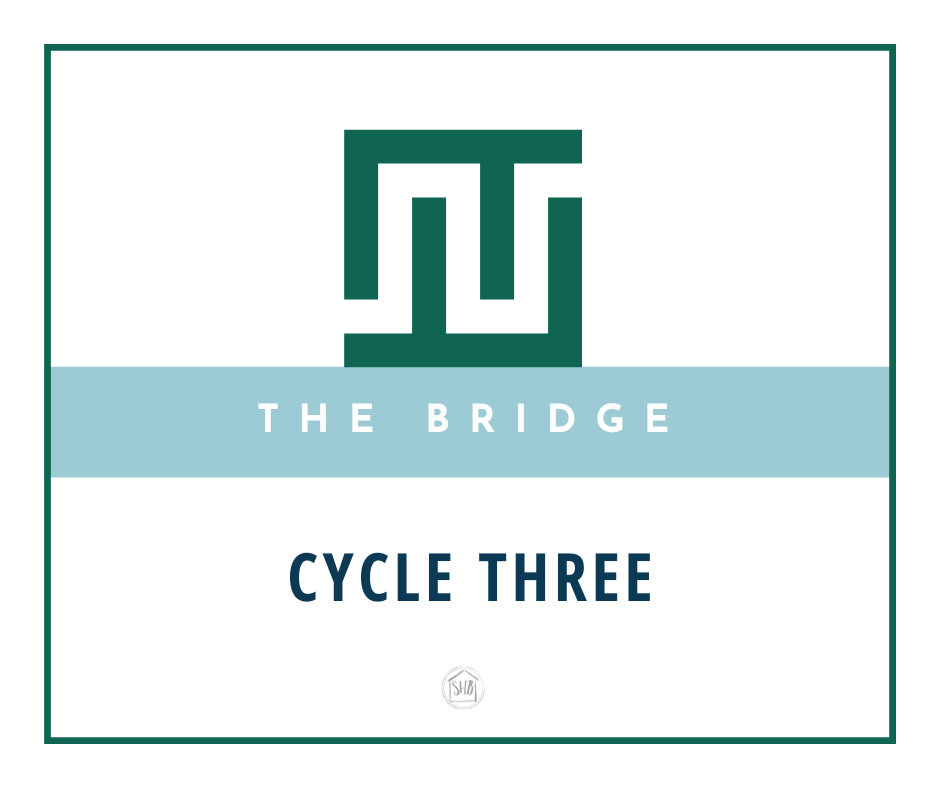
Looking to continue navigating the paths between Charlotte Mason and Classical philosophies in the upper elementary years? Please sign up here. If you are already a subscriber, it will NOT double-subscribe you.




